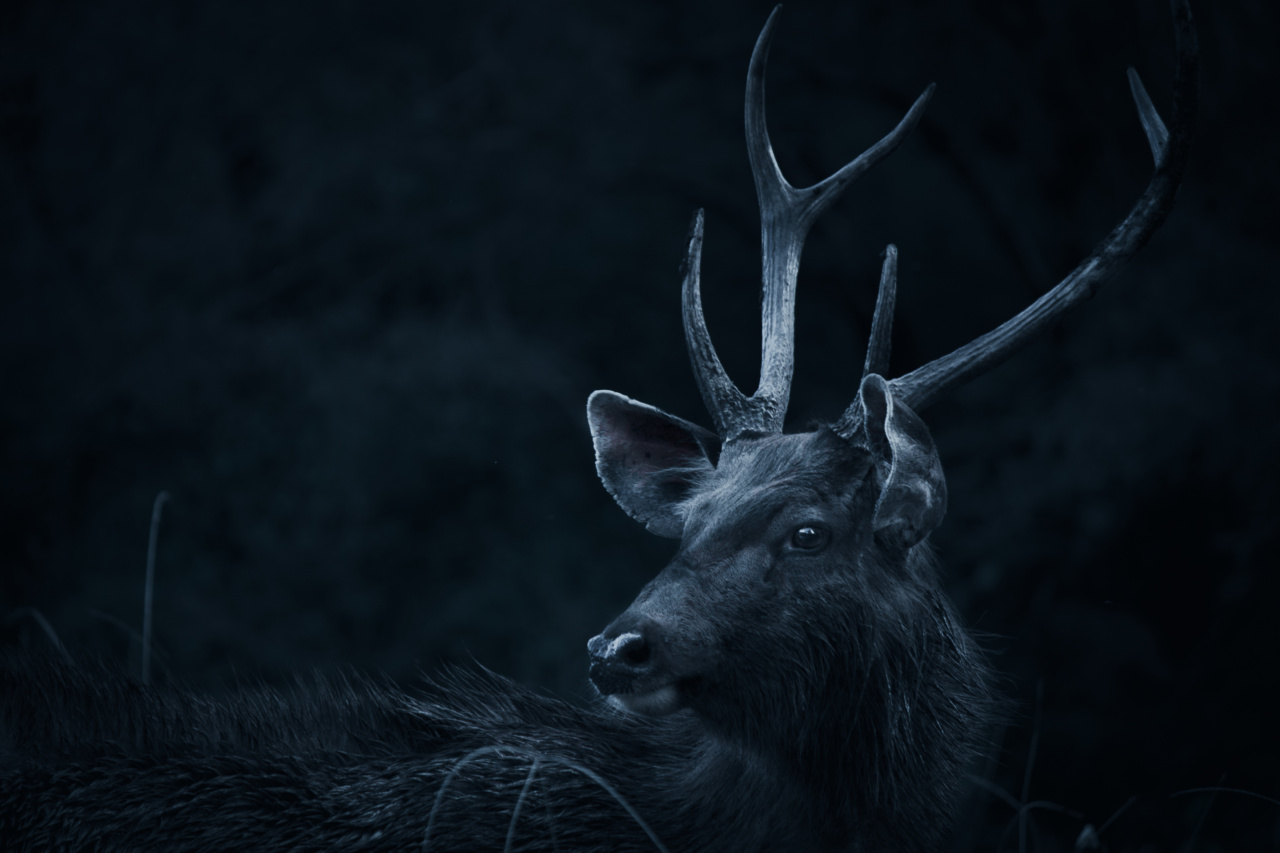The white-tailed deer, scientifically known as Odocoileus virginianus, is a majestic creature that roams the woodlands of North and Central America. It is famous for its distinctive antlers, which are primarily found on males and serve various purposes.
These antlers are not only visually impressive but also play a vital role in the deer’s survival and reproduction. In this article, we will explore the significance of the mighty antlers of the powerful white-tailed deer.
1. Antler Growth and Composition
The antlers of a white-tailed deer are unique among the deer species. They are composed of bone tissue and are an extension of the frontal bones of the deer’s skull. Antlers are deciduous, meaning they are shed and regrown annually.
The antler growth cycle begins in the spring with a process called antlerogenesis. During this period, a deer’s antlers are covered with a soft and highly vascularized tissue called velvet, which supplies blood and nutrients to support antler growth.
2. Antlers as Weapons and Defense
One of the primary functions of the antlers is combat. Male white-tailed deer, known as bucks, use their antlers during the mating season to establish dominance and compete for mating rights.
This behavior is commonly referred to as “rutting.” Bucks engage in fierce battles, clashing their antlers together in an attempt to intimidate their rivals and establish their superiority. The size and strength of the antlers play a crucial role in determining a buck’s dominance and mating success.
3. Antlers for Attracting mates
The antlers of a white-tailed deer not only serve as weapons but also act as visual signals for attracting mates. During the rutting season, bucks shed the velvet covering their antlers, revealing the fully grown and hardened bone.
The antlers, with their impressive size, intricate branching, and symmetry, are visually striking and signal the buck’s genetic fitness and overall health to potential mates. Female white-tailed deer, known as does, often choose mates based on the quality and appearance of their antlers.
4. Antlers for Territory Marking
Aside from combat and attracting mates, antlers also serve as territorial markers. Bucks mark their territories by creating “scrapes” on the ground and rubbing their antlers against trees, leaving scent and visual cues for other deer.
The visual presence of a dominant buck’s antlers acts as a warning to other males, discouraging them from encroaching upon a claimed territory. This territorial marking behavior helps maintain the hierarchical structure within white-tailed deer populations.
5. Antlers and Growth Patterns
The growth patterns of antlers follow a distinct cycle. After the rutting season, when mating competition is over, bucks begin to shed their antlers.
This process is facilitated by the release of specialized cells called osteoclasts, which resorb the bony tissue connecting the antlers to the skull. Once shed, the deer enter a period of regeneration, where the antlers start regrowing from the base. The size and complexity of the antlers tend to increase with a buck’s age, nutrition, and overall health, reaching their peak in prime adulthood.
6. Antlers and Environmental Factors
The growth and size of antlers are influenced by various environmental factors, mainly nutrition and genetics. Adequate nutrition plays a significant role in determining the size and health of antlers.
Bucks with access to abundant food resources, such as nutrient-rich vegetation, tend to have larger antlers compared to those with limited food availability. Genetics also play a role, as certain deer populations exhibit genetic traits that result in consistently larger or smaller antlers.
7. Antlers in Conservation and Hunting
The antlers of white-tailed deer hold great value within both conservation and hunting communities. In conservation efforts, researchers study antler characteristics to monitor population health and genetic diversity.
By studying the growth patterns and size of antlers, conservationists can gain insights into the overall fitness and reproductive success of a deer population. In hunting, antlers serve as trophies, often prized for their size, symmetry, and uniqueness. However, it is worth noting that responsible hunting practices prioritize population management and sustainable harvesting.
8. Antlers and the Cervidae Family
Antlers are not unique to white-tailed deer. They are a defining feature of the entire cervid family, which includes deer, elk, moose, and caribou.
While all cervids possess antlers, the specific characteristics, growth patterns, and purposes of antlers may vary among different species. For example, the antlers of an elk are typically much larger and more complex than those of a white-tailed deer.
Understanding the similarities and differences in antler adaptations across cervids provides valuable insights into their evolutionary history and ecological roles.
9. Antlers and Human Symbolism
Throughout human history, antlers have held symbolic meanings in various cultures. They have been associated with strength, power, and regeneration.
In many mythologies and folklore, deer with magnificent antlers are revered as symbols of gods, fertility, and abundance. Antlers have also been used in artistic representations, such as cave paintings and sculptures, showcasing their cultural significance and enduring fascination within human societies.
10. Conclusion
The mighty antlers of the powerful white-tailed deer are not only visually striking but also serve numerous essential functions.
These impressive structures aid in combat, attract mates, mark territories, and provide valuable insights into population health. Understanding the biology and significance of antlers allows us to appreciate the intricate adaptations and evolutionary history of the white-tailed deer, and indeed the entire cervid family.




























